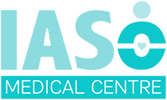Breast Cancer Awareness
Breast cancer is still considered the most common cancer in women and leading cause of death in women. October month is Breast Cancer Awareness Month. A month to support, admire and honor the ones who are fighting, were taken and survivors without giving up.
Early signs of breast cancer can be a lump in a breast, dimpling of skin, painful breast or armpit, discharge from the nipple or inverted nipple, redness of skin, or skinchanges in the surrounding of nipple (areola). It is highly recommended to seek medical advice if you present one of those symptoms.
Up to 10 percent of breast cancer is linked to gene mutations. The most well-known are breast cancer gene 1 (BRCA1) and breast cancer gene 2 (BRCA2). Different risk factors can increase the risk such: gender (more women than men), age, history of breast conditions personal or family, inherited genes, exposure to radiation, obesity, early menarche, early menopause, having no children, or having children at an older age, postmenopausal hormone therapy and alcohol consumption. [1]
Firstly, a physical examination will be made at the doctor’s office. Secondly, if signs of breast cancer are suspected several tests are needed such as: Mammogram, MRI scan, breast ultrasound, nipple discharge exam, CT scan, PET scan or even bone scan. Women in the age range of 40 to 44 can start annual mammogram examinations up to 54 years of age and then 55 and older every 2 years. Different kind of biopsies can be made which you will discuss with your doctor with different kind of risks and benefits. Surgery may be needed for taking sample of a lump and tests will be done on breast cancer cells for certain proteins such as estrogen and progesterone receptors or certain genes.
Staging when confirming breast cancer is vital for the best possible treatment and outcome. There are different stages from 1 to 4, 1 being the noninvasive and 4 a more serious cancer that has spread beyond the breast also called metastasic breast cancer.
Treatments variate from surgery and radiation to chemotherapy, hormone treatment, targeted therapy and immunotherapy drugs. These are better discussed after a treatment plan will be made with your doctor depending on stage, hormone specific, age, underline current problems or diseases and information on treatment and side effects. [2]
Sometimes lumps can be harmless as well. Pain or any kind of resistance or lump can be completely bening or even a cyst. If any kind of lump shows in mammogram then a biopsy is recommended to differentiate between bening and malignant lump. Early detection is the key and can be lifesaving. Simple operation for removal of a lump if needed can be discussed with your doctor as well as further options after microscopic analysis. [3]
Coping with a breast cancer diagnosis can be overwhelming and every person is different in its own way with different coping mechanisms. There are different kind of support groups, professionals as well as breast cancer survivors when in need to express concerns and feelings.
When preparing an appointment, we encourage you to prepare as much as you can with all of questions, medical and family history, medications that you currently take and any kind of symptoms that you are experiencing to give you the best possible answers. Support and consulting is always provided to patients in need.
‘Cancer is a word, not a sentence’ – John Diamond.
Spyridakis Chrysostomou, MD
2021
Citations:

